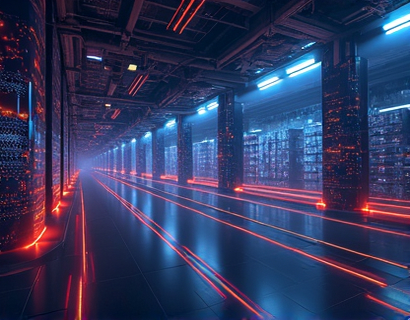Revolutionizing Aquaculture Business Management with Advanced Software Solutions
In the rapidly evolving landscape of aquaculture, business owners and managers face numerous challenges that can impact the success and sustainability of their operations. From managing complex logistics and ensuring optimal water quality to tracking financial performance and complying with regulatory standards, the demands are multifaceted. Advanced software solutions have emerged as a game-changer, offering comprehensive tools that streamline operations, enhance productivity, and optimize resource use. These solutions are designed to provide aquaculture businesses with the edge they need to thrive in a competitive market.
Streamlining Operations
One of the primary benefits of implementing advanced software in aquaculture is the significant improvement in operational efficiency. Traditional methods often rely on manual data entry and paper-based records, which are not only time-consuming but also prone to errors. Modern software solutions automate these processes, allowing for real-time data capture and management. This automation reduces the workload on staff, minimizes human error, and ensures that critical information is always up-to-date and accessible.
For instance, integrated management systems can handle a wide range of tasks, from feeding schedules and water quality monitoring to inventory management and financial tracking. These systems can be customized to fit the specific needs of each aquaculture operation, ensuring that all aspects of the business are efficiently managed. By centralizing data and processes, owners and managers can make informed decisions quickly, leading to improved overall performance.
Enhancing Productivity
Productivity is a key factor in the success of any aquaculture business. Advanced software solutions are designed to boost productivity by automating routine tasks and providing valuable insights through data analytics. For example, automated feeding systems can adjust feed quantities based on real-time data such as water temperature, fish size, and growth rates. This ensures that fish receive the optimal amount of feed, reducing waste and improving growth rates.
Additionally, software can facilitate better scheduling and resource allocation. By analyzing historical data and current conditions, these systems can predict the best times for certain activities, such as harvesting or maintenance. This predictive capability helps businesses operate more smoothly, reducing downtime and increasing output. Moreover, the ability to track and analyze productivity metrics allows managers to identify areas for improvement and implement targeted strategies to enhance performance.
Optimizing Resource Use
Resource optimization is crucial in aquaculture, where water, feed, and energy are significant costs. Advanced software solutions provide tools to monitor and manage these resources more effectively. For example, water quality monitoring systems can continuously track parameters such as pH, dissolved oxygen, and ammonia levels, alerting managers to any deviations from optimal ranges. This proactive approach helps maintain a healthy environment for the fish, reducing the risk of disease outbreaks and mortality.
Feed management is another area where software can make a substantial impact. By integrating with feeding equipment, these systems can ensure that the right amount of feed is dispensed at the right times, based on precise calculations. This not only reduces feed costs but also minimizes environmental impact by preventing excess feed from polluting the water. Energy management tools can similarly optimize the use of electricity and other utilities, leading to cost savings and a smaller carbon footprint.
Compliance and Reporting
Compliance with regulatory standards is a critical aspect of running a successful aquaculture business. Advanced software solutions help ensure that operations remain in line with local, national, and international regulations. These systems can be configured to track and manage documentation related to permits, inspections, and reporting requirements. By automating these processes, businesses can reduce the risk of non-compliance and the associated penalties.
Reporting is another area where software shines. With the ability to generate detailed reports on various aspects of the business, from production metrics to financial performance, managers can easily present data-driven insights to stakeholders. These reports can be customized to meet specific needs, whether for internal use or for sharing with investors, regulators, or customers. The ease of generating accurate and comprehensive reports saves time and enhances transparency.
Integration and Scalability
Modern software solutions are designed to be highly integrable, allowing them to work seamlessly with existing systems and equipment. This compatibility ensures a smooth transition and maximizes the benefits of the new technology. Whether it's integrating with sensors, feeding systems, or other third-party tools, advanced software can create a cohesive and efficient operation.
Scalability is another important feature, as aquaculture businesses often grow and evolve over time. Software that can scale with the business ensures that new challenges and opportunities are met with the right tools. Whether expanding to new locations or increasing production capacity, the software can adapt to meet the changing needs of the operation.
Case Studies and Success Stories
Numerous aquaculture businesses have successfully implemented advanced software solutions, achieving significant improvements in various areas. For example, a large-scale salmon farm in Norway reported a 20% reduction in feed costs and a 15% increase in fish growth rates after integrating an advanced feed management system. The real-time data and automated adjustments allowed the farm to optimize feeding practices, leading to better outcomes and higher profits.
Another case involves a shrimp farm in Thailand that used a comprehensive management software to improve water quality monitoring and disease management. The system's alerts and recommendations helped the farm reduce mortality rates by 30% and increase overall production. The software's ability to track and analyze data provided valuable insights that informed better decision-making.
Future Trends and Innovations
The aquaculture industry is continually evolving, and software solutions are at the forefront of this change. Emerging technologies such as artificial intelligence (AI) and the Internet of Things (IoT) are being integrated into management systems to further enhance capabilities. AI can predict trends and optimize operations based on complex data analysis, while IoT devices provide real-time monitoring and control of various parameters.
Blockchain technology is also being explored for its potential to enhance transparency and traceability in the supply chain. By recording every step of the production process on a blockchain, businesses can ensure that their products meet high standards of quality and sustainability, building trust with consumers and stakeholders.
Conclusion
Advanced software solutions are transforming the way aquaculture businesses operate, offering powerful tools to streamline processes, enhance productivity, and optimize resource use. By embracing these technologies, owners and managers can gain a competitive edge, ensuring their operations are efficient, sustainable, and profitable. As the industry continues to grow and face new challenges, the role of software in driving innovation and success will only become more significant.










































